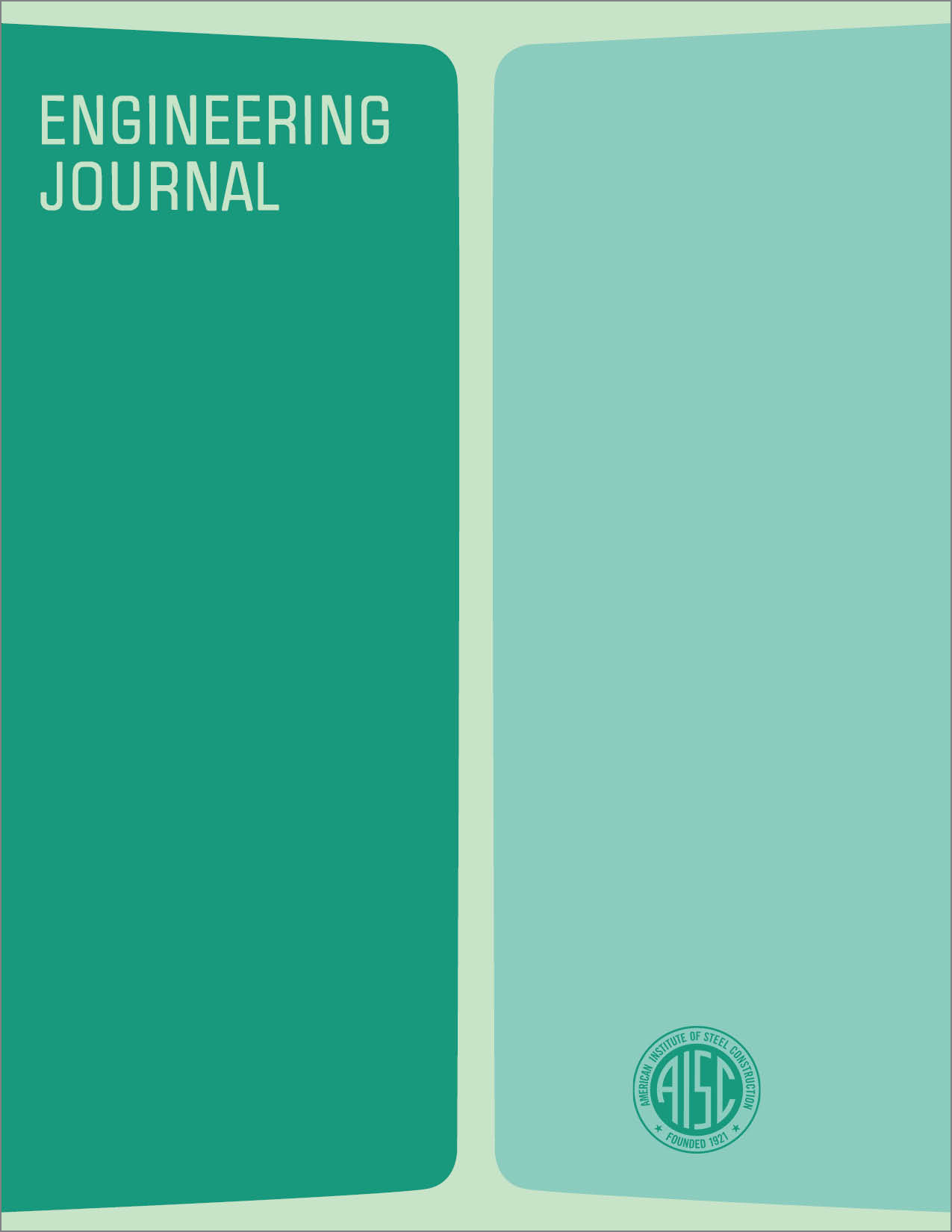Torsional Strength and Stiffness of Steel Structures
DOI:
https://doi.org/10.62913/engj.v17i2.350Abstract
The torsional strength and stiffness of steel structures might seem to many to be a rather forbidding topic, but it can be quite simple for a wide variety of common steel structures such as bridges, towers, laced structural members, hydraulic gates and others. In undergraduate courses in Strength of Materials, all engineering students learn the derivation and use of the torsion formulas as applied to circular shafts. Some may learn that in a thin-walled tube of any cross section the shearing force per unit of length around the periphery of a cross section is a constant and is equal to the torsional moment divided by twice the area enclosed within the cross section. That is about as far as most undergraduate students go with the torsion problem. However, that same simple thinwalled tube formula, v = M/2Ao, is applied to box girders and it also can be applied to many trussed structures, or to structures containing both plates and truss forms. Consider a trussed box as shown in Fig. 1. With the front face open, that is, without being braced, the box offers no effective resistance to the twisting shown. Let the amount of twist be measured by the angle, fi, as seen in the top view. Other displacements can then be determined in terms of fi and the overall dimensions of the box by going through steps through , as indicated on the figure. The angle fi is measured in radians and is small enough so that, without significant error, the sin fi and the tan fi can be set equal to fi and the cos fi can be taken as unity.

